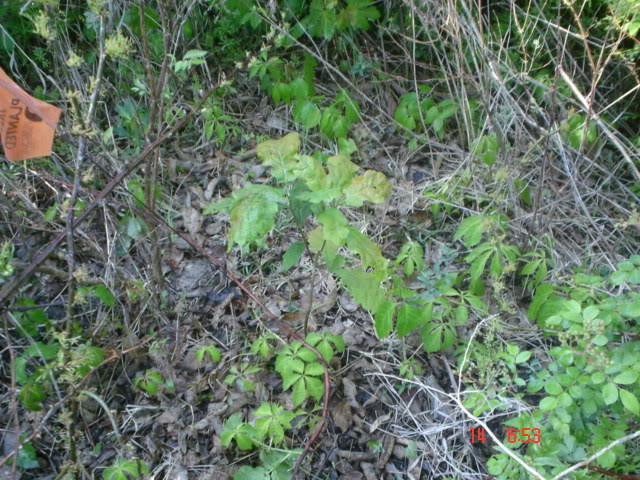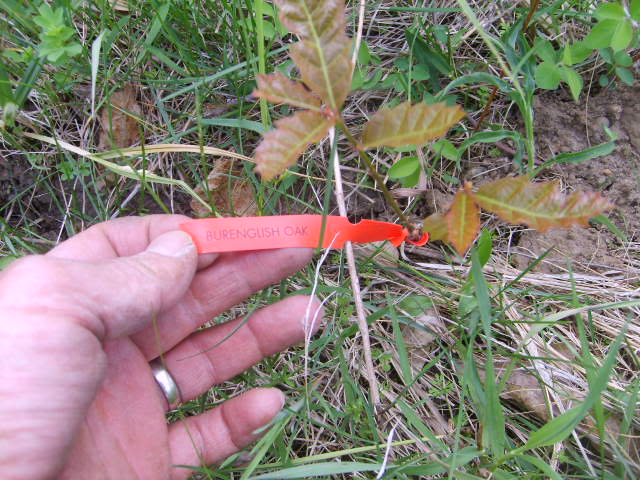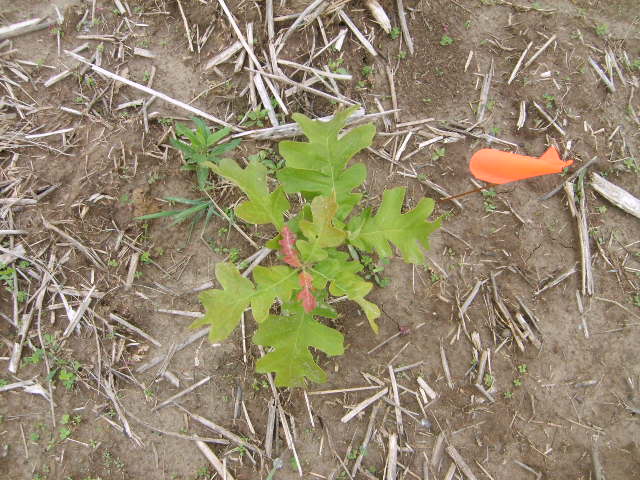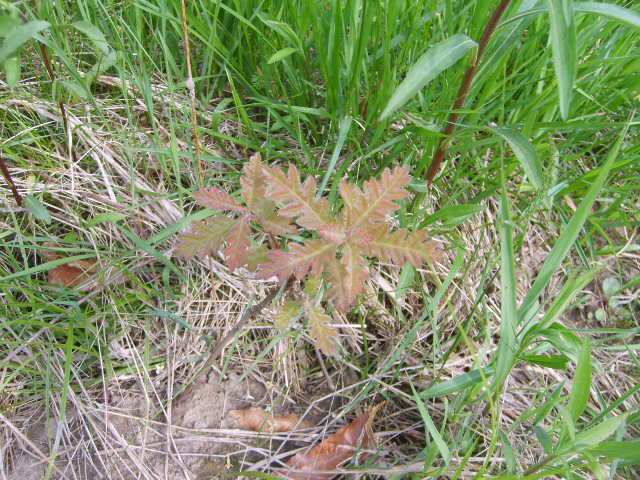dbltree
Super Moderator
Oaks and chestnuts can be easily started from seed with the right knowledge about collecting, storing and planting them and we'll try to cover those things in detail in this thread along will all pictures and information about various oak species and hybrids.
Sources for acorns include parks, universities and friends with heavy yielding trees and willing to share but hybrid oak acorns are less readily available so here a few sources for hybrids:
Oikos tree crops -Acorn source
Sheffields -Acorns
Advantage Forestry
Concordia Oak acorn source
Why hybrids?
Oikos Tree Crops - Hybrid Oaks
Acorns can be fall planted individually or broadcast at 1500 acorns per acre and disked in.
Direct Seeding of Hardwoods in Wisconsin
The biggest source of acorn predation of course is squirrels and mice who dig up newly planted acorns so for small quanities one needs to protect them in some manner.
Tree tubes, fenceing or screen will all work to protect the acorns and later the tiny seedlings.
Planting Oaks- Restoration

One ft tall tubes are inexpensive and a great way to protect acorns
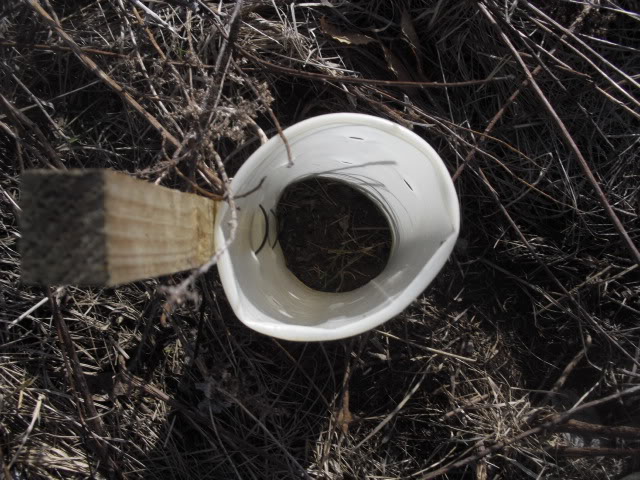
The tubes continue to protect and enhance early seedling growth

Acorn storage is extremely important especially when storing white oak acorns. Keeping them slightly moist while not allowing them to get moldy is imperative.
Acorn Storage
Growing Your Own Oak Seedlings
Planting Oaks
Collect and plant acorns
Growing Oak Trees From Seed
The following is a link to a list of YouTube videos on collecting and storing acorns.
How to Grow Oak Trees From Acorns
Remember to do a float test, if they float discard them, don't let them lay on in the hot baking sun and completely dry out, sort out ones that are cracked, have holes in them etc.
Look for trees that are prolific and yield consistantly year after year or that deer seek out among others. Watch for young trees that have produced early and bring new genetics in to your area by swapping with friends.
If you wish to start them in pots to transplant later this company has some great products to encourage root growth.
RootMaker System
Big Rock Trees - RootMaker Source
This system can help your acorns go from this

to this with roots branching evenly in all directions

18 cell RootMaker trays are ideal for starting and growing oaks and chestnuts for 12-16 weeks
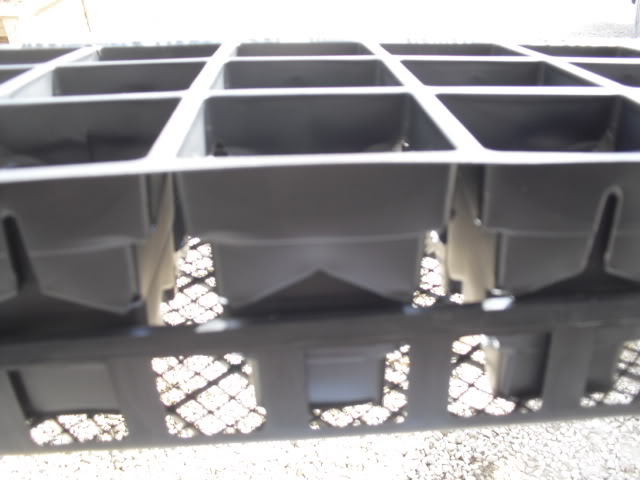

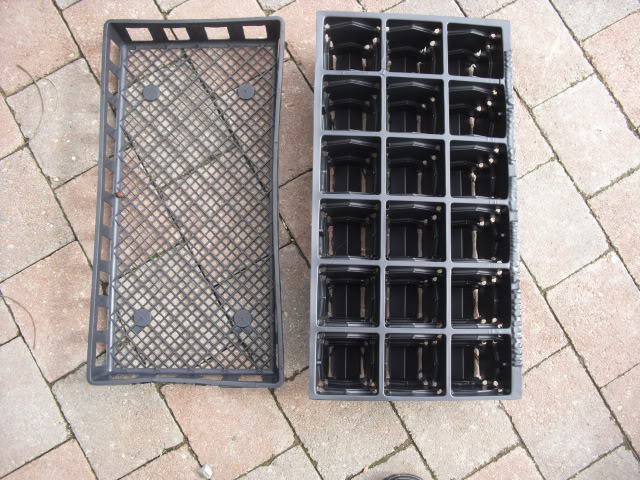
You can mix your own soiless mix of perlite, vermiculite and peat or simply purchase a good quality potting mix.
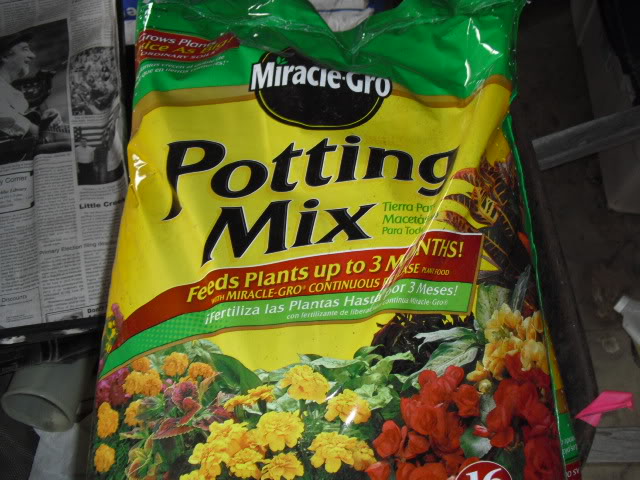
Many acorns and chestnuts will begin to sprout and may develop extensive root systems even in refrigerated storage.
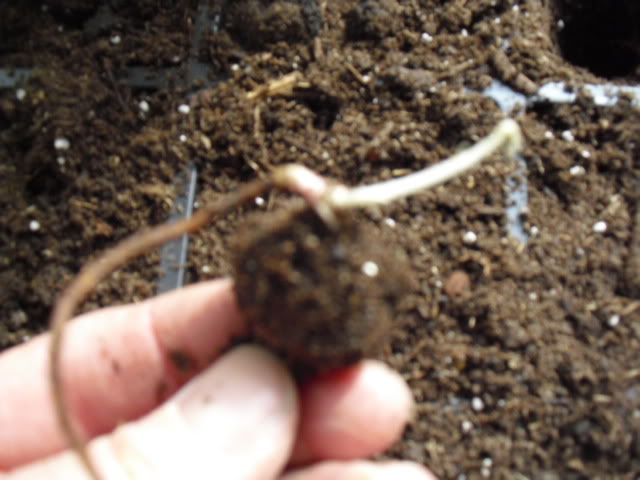
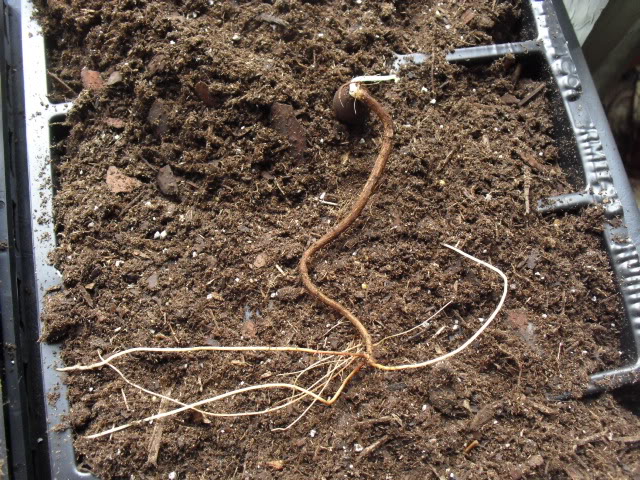
Chestnut roots after winter storage
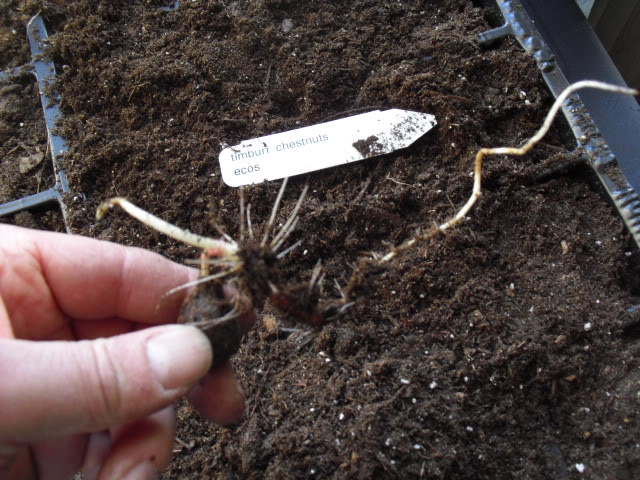
Early to mid march is a great time to start acorns and chestnuts if you have a warm sunny place to do so.
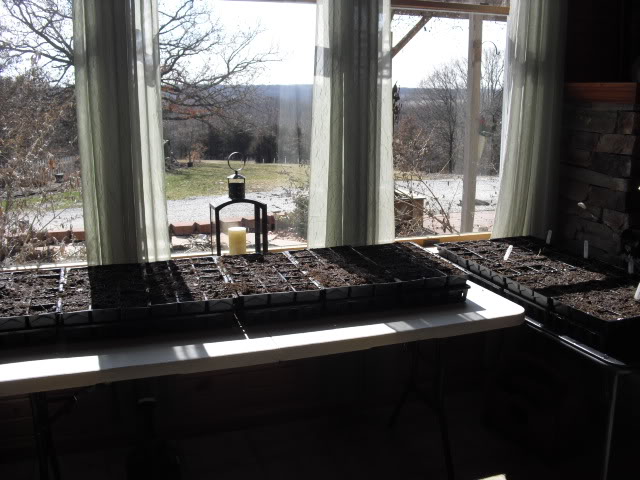
and they will begin to sprout within days although there will be stragglers that sprout weeks later.
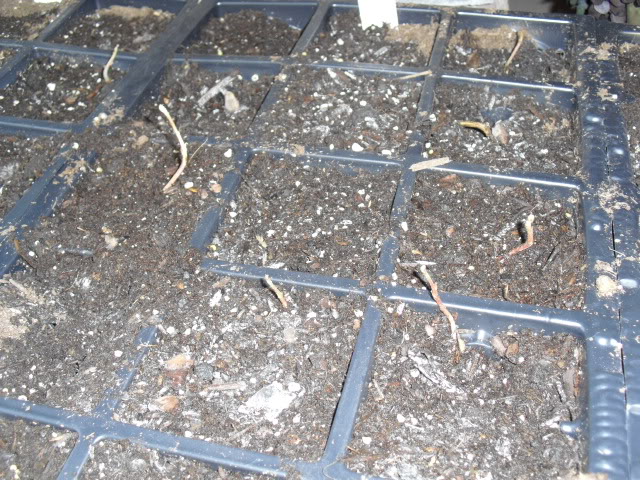
3-18
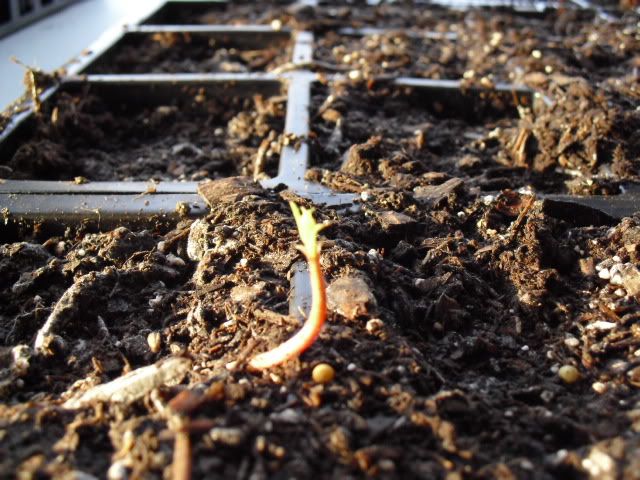
3-26

4-2
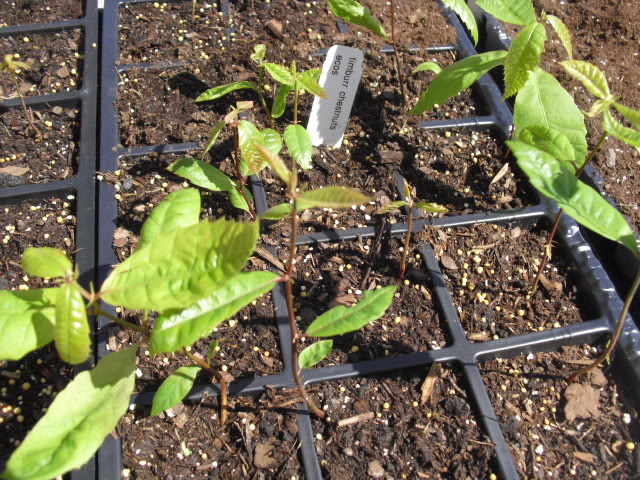
4-16
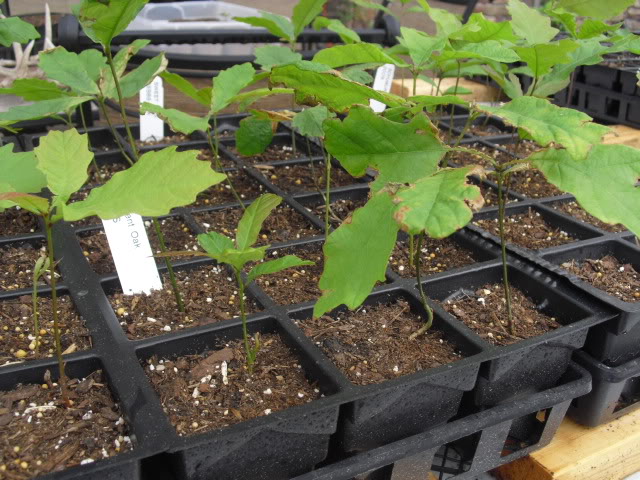
Fertilizer Use slow release Osmocote fertilizer and/or MiracleGro foliar feed to fertilize young seedlings.

Root control, direction creates fibrous roots in RootMakers®.

Tree seedlings from RootMaker® plastic propagation containers.

I will continue to add to this post and encouarage others to add to this thread to give others answers to any questions regarding growing oaks from acorns...
Oak Species
Black Oak- Quercus velutina




Red Oaks




Pin Oaks




Chinquapin Oak (Quercus muehlenbergii)




Dwarf Chinkapin Oak can produce acorns in 3-4 years which makes it very a very attractive oak to consider planting! They are also perhaps the sweetest acorns to be found...
Dwarf Chinkapin Oak — Quercus prinoides Seedling Source
Dwarf Chestnut Oak (Quercus prinoides) does say this...
MDC White Oak list

From this site: dwarf chinkapin oak






These are some pics of PassThru's DWARF CHINKAPIN OAK and you can see this is more like a shrub then a tree but laden with acorns!
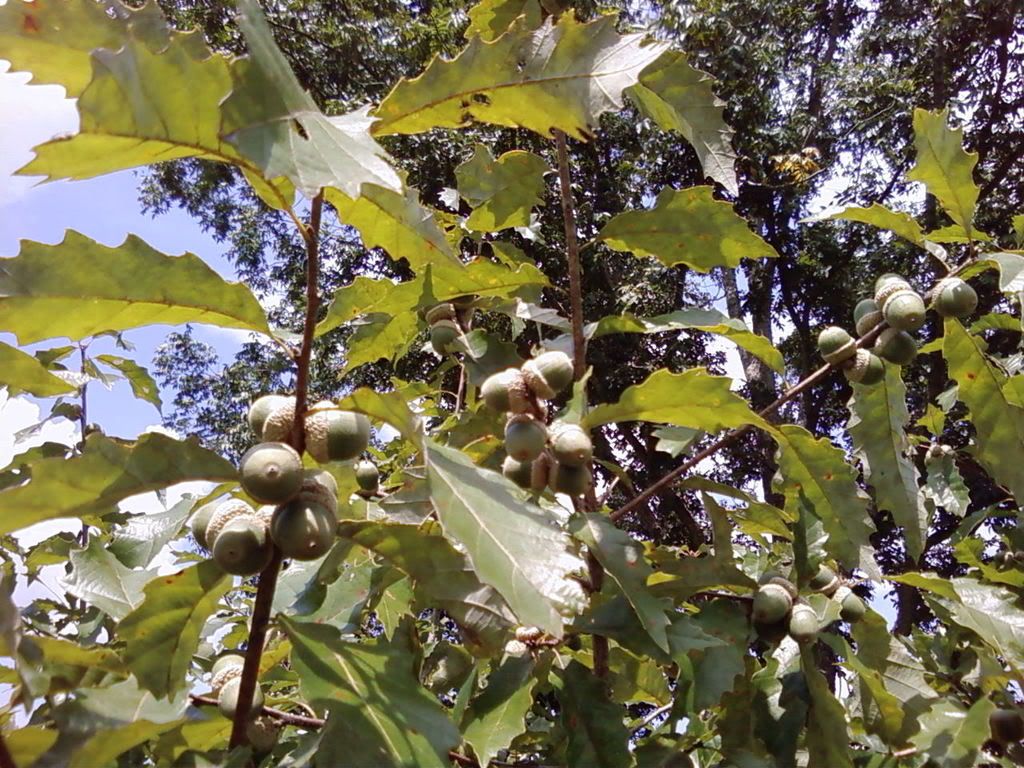
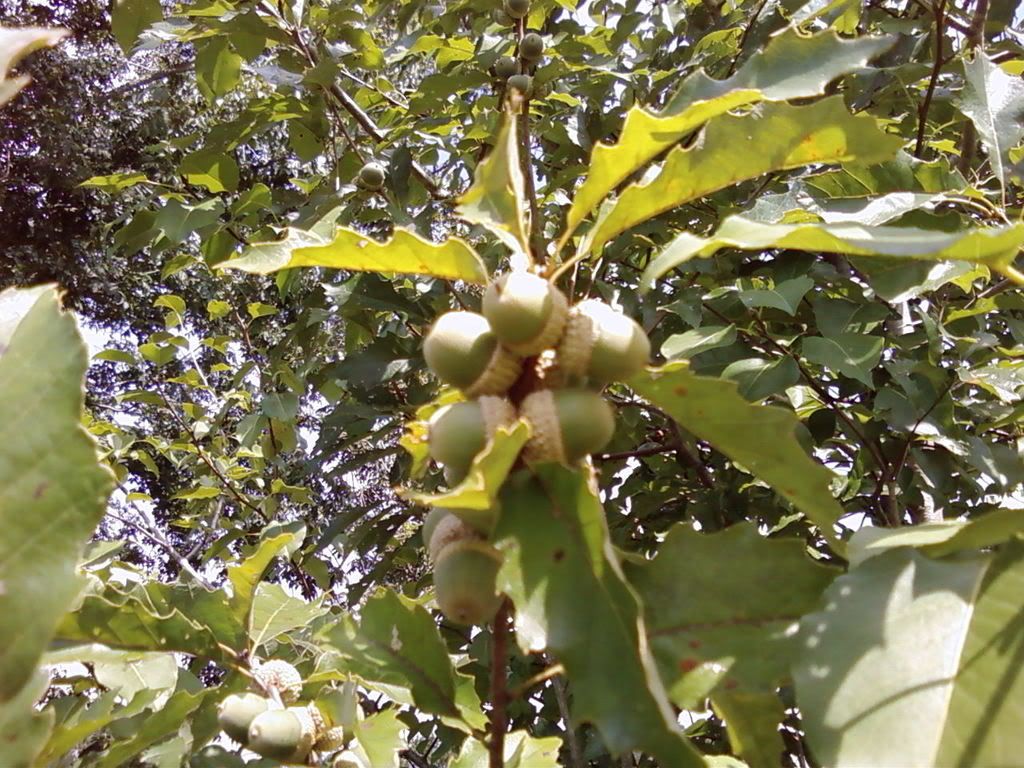
Oikos Tree Crops - Dwarf Chinkapin Oak
Morse Nursery - Dwarf Chinkapin Source
LINCOLN-OAKES NURSERIES
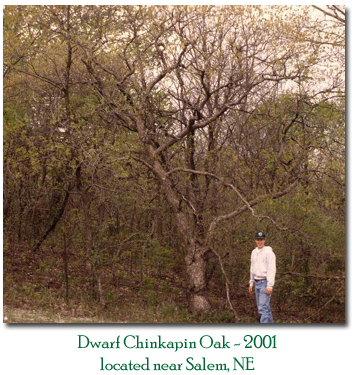
Oak ID Key
True Nature Farm - Dwarf Chinkapin Oak seedlings
RPM Southern Hardwoods
The following pics are of Chinkapin oak Quercus muehlenbergii Engelm. (not dwarf)...pretty tough to tell which is which.
Chinkapin oak
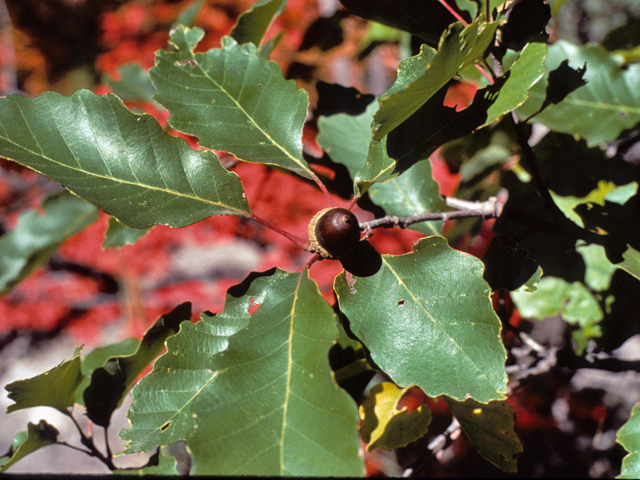
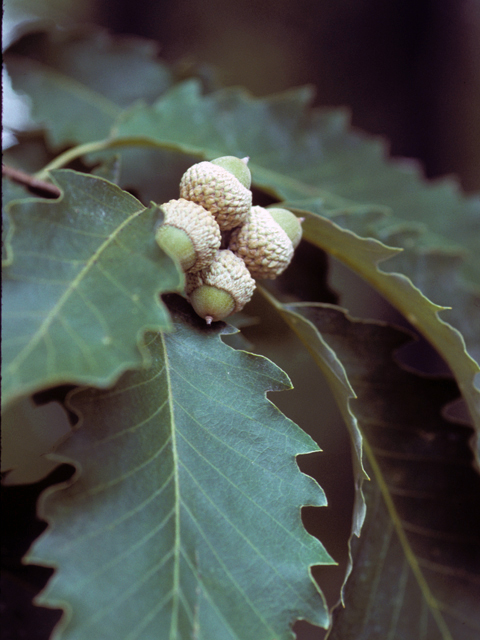
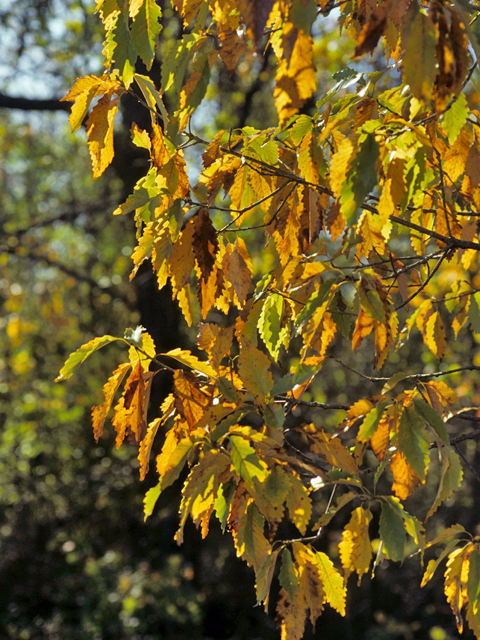
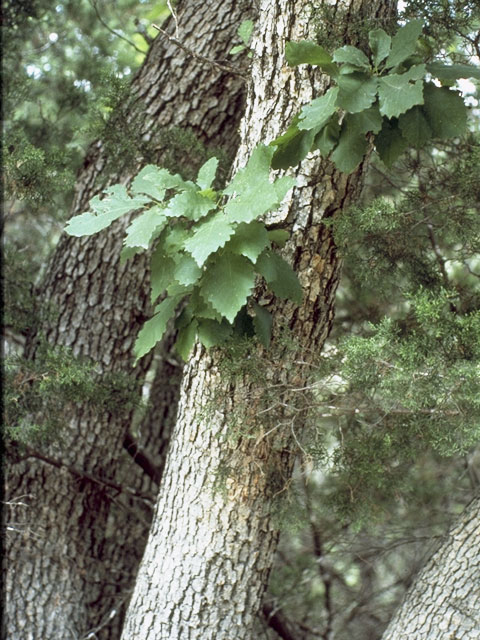
Swamp White Oak



white oak Fagaceae Quercus alba L.




This is a stand of young white oaks
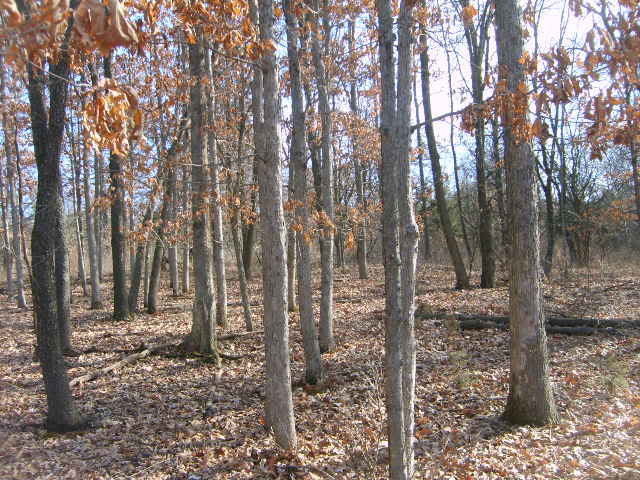
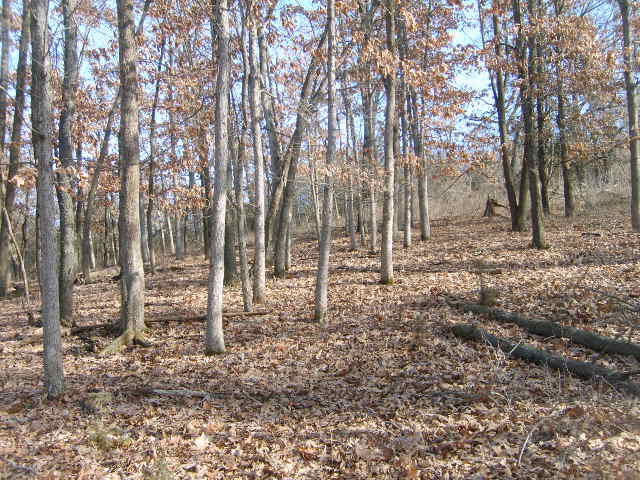
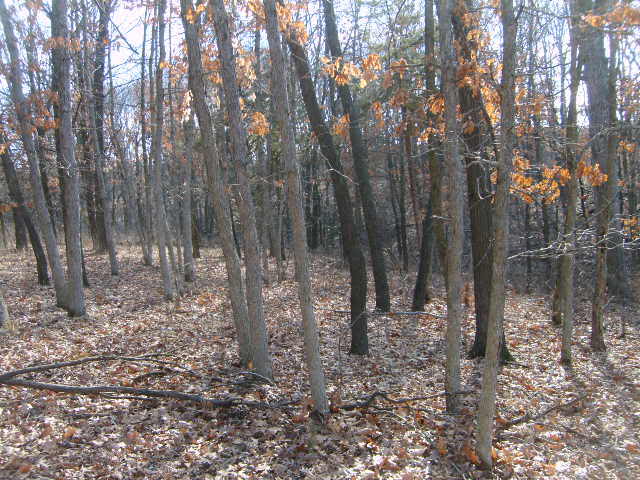
Concordia Oak is a 3-way cross between a swamp white oak, chinkapin oak and dwarf chinkapin oak.



sawtooth oak Fagaceae Quercus acutissima Carruthers





Should you fertilize oak trees to increase acorn production?
probably not....read this link...
Increased acorn production
Sources for acorns include parks, universities and friends with heavy yielding trees and willing to share but hybrid oak acorns are less readily available so here a few sources for hybrids:
Oikos tree crops -Acorn source
Sheffields -Acorns
Advantage Forestry
Concordia Oak acorn source
Why hybrids?
Oikos Tree Crops - Hybrid Oaks
Plant an Acorn - Grow an Oak TreeUseful for Timber, Acorn Production and Ornamental Value. The tendency of oaks to cross-pollinate with one another creates hybrids. Within North American oaks alone, it’s estimated there are at least 200 hybrids found wild. Hybrid oaks are usually fertile and produce progeny that can show wide variation and many similarities of both parents. For the last 30 years, Oikos Tree Crops has maintained a hybrid oak planting for the purpose of producing the most vigorous oak hybrid seedlings. What started as a simple horticultural curiosity has resulted in some distinct refinements in using hybrid offspring. The results have been dramatic.
Here are a few of the salient points of the hybrid oak crowd:
Faster growth: The right hybrid in the right soil can exhibit two to three times the growth rate of pure species.
Precocity: Acorns will begin bearing in 4-8 years from seedling compared to 15-30 years in pure species.
Ecological adaptability: Adaptable to different soil types and climates exhibiting greater vigor even if the conditions are not optimum.
Heavy Acorn Production: Some selections produce a spur type fruiting or dense branching which in turn greatly increases the yields per individual tree. All of these provide a wide variation of different types useful for a wide variety of combinations and uses. What more could you ask for in an oak?
Direct seeding acornsThe best time to collect acorns, either off the tree or from the ground, is when they begin falling - just that simple. Prime picking is late September through the first week in November, depending on oak tree species and location within the United States. The acorn is perfect when plump and the cap removes easily
Preparing Acorns for Planting:
The two most critical components for caring for acorns that are to be planted are: not allowing the acorns to dry out for an extended period and not allowing the acorns to heat up. Acorns will lose their ability to germinate very quickly if allowed to dry out.
Keep acorns in the shade as you collect them, and put them in your refrigerator as soon as possible if not planting immediately. Don't freeze acorns.
Immediate planting should be limited to the white oak species group including white, bur, chestnut and swamp oak. Red oak species group acorns must be planted in the second season - the following spring.
Storing Acorns for Planting:
Put acorns in a polyethylene plastic bag - a wall thickness of four to ten mils - with damp peat mix or sawdust. These bags are ideal for storing acorns since they are permeable to carbon dioxide and oxygen but impermeable to moisture.
Close the bag loosely and store in the refrigerator at 40 degrees (white oaks can still sprout at between 36 and 39 degrees). Check acorns throughout the winter and keep just barely damp.
Red oak acorns need about 1000 hours of cold or about 42 days. Planting these acorns in late April of the following season gives you the best success but can be planted later.
Planting White Oak Group Acorns:
White oak acorns mature in one season - the season of collection. White oak acorns do not exhibit seed dormancy and will start to germinate very soon after maturing and falling to the ground. You can plant these acorns immediately or refrigerate for later planting.
Planting Red Oak Group Acorns:
Red oak acorns mature in two seasons. The red oak group has to have some seed dormancy and generally does not germinate until the following spring and with some stratification (a cooling period). If stored properly and kept damp, these red oak acorns can be held in cold storage for planting in late April through early summer.
Germinating and Potting Acorns:
After determining the proper time to plant, you should select the best looking acorns (plump and rot-free) and place those in loose potting soil in one-gallon pots or deeper containers. The tap root will grow quickly to the bottom of containers and root width is not as important.
Containers should have holes in the bottom to allow for drainage. Place acorns on their sides at a depth of one half to one times the width of the acorn. Keep the soil moist but aerated. Keep the "pots" from freezing.
Transplanting Acorns:
Don't allow an oak seedling’s tap root to grow out of the container bottom and into the soil below. This will break the tap root. If possible, seedlings should be transplanted as soon as the first leaves open and become firm but before extensive root development occurs. ***(exception when using RootMaker cells)***
The planting hole should he twice as wide and deep as the pot and root ball. Carefully remove the root ball. Gently set the root ball in the hole with the root crown at the level of the soil surface. Fill the hole with soil, firmly tamp and soak
Acorns can be fall planted individually or broadcast at 1500 acorns per acre and disked in.
Direct Seeding of Hardwoods in Wisconsin
The biggest source of acorn predation of course is squirrels and mice who dig up newly planted acorns so for small quanities one needs to protect them in some manner.
Tree tubes, fenceing or screen will all work to protect the acorns and later the tiny seedlings.
Planting Oaks- Restoration

One ft tall tubes are inexpensive and a great way to protect acorns

The tubes continue to protect and enhance early seedling growth

Acorn storage is extremely important especially when storing white oak acorns. Keeping them slightly moist while not allowing them to get moldy is imperative.
Acorn Storage
More links on collecting, storing and growing acornsMost seed managers do not like to store acorns over long periods, because their size requires large refrigerated storage space and because viability declines each year. Acorns of most red oaks can be stored for 3 years without critical losses in viability (Bonner 1973), while most white oaks can be stored only 6 months without complete loss of viability.
One solution to the problem is to plant acorns in the fall immediately after collection and avoid storage. For some nurseries and conditions, this option is a good one for next years crop. Short-term storage under good conditions between collection and sowing is essential to maintain good acorn quality, however, and many managers would like to store extra acorns for use 1 or 2 years later. Since good storage practices for both purposes require the same facilities and procedures, the recommendations are the same. (Bonner, 1993)
Acorns of red oak species should be stored with their moisture contents at 30 percent or higher in temperatures near, but above, freezing (34?F to 40?F). Air-tight storage is lethal, so containers must allow some gas exchange with the atmosphere while maintaining high acorn moisture levels (Bonner 1973). Polyethylene bags with a wall thickness of 4 to 10 mils are good. For large quantities of acorns, storage can be in drums, cans, or boxes with polyethylene bag liners. Container tops and liners should not be completely closed; this will allow sufficient gas exchange.
If water collects in the bottoms of storage containers, it should be drained from acorns intended for storage longer than over winter. (Bonner, 1993) (Table:Germination and Moisture Contents of Cherrybark Oak Acorns)
With proper care, many southern red oaks should maintain good viability for at least 3 years. We have had good success in our laboratory with water, cherrybark, and Nuttall oaks (Q. nuttallii Palmer), but less success with Shumard and willow (Q. phellos L.) oaks. Similar methods were used by Farmer (1975) for successful storage of northern red and scarlet (Q. coccinea Muenchh.) oaks, and by Suszka and Tylkowski (1982) for northern red oak in Poland. (Bonner, 1993) (Table: Viability and Retention of Various Southern White Oak Acorns)
With few exceptions, white oak acorns cannot be stored longer than over winter (4 to 6 months) without complete loss of viability. For over-winter storage, the same methods outlined for red oak storage should generally be used.
Thinner polyethylene (1.75 mil) or cloth bags may be advantageous for white oaks because of a need for greater aeration (Rink and Williams 1984). Schroeder and Walker (1987) reported excellent results in storage of bur oak (Q. macrocarpa Michx.) for 6 months at 34?F and 44 percent acorn moisture in sealed plastic bags. No information was given on the thickness of the bags. Any reduction in acorn moisture significantly decreased germination capacity and rate. Laboratory testshave provided some rare successes with storing white oaks species. (Bonner, 1993).
Moisture content remains a crucial factor throughout storage.
With acorn moisture levels above 30 percent and temperatures above freezing, respiration proceeds at a rapid rate. This process gradually decreases acorn dry weight, causing small increases in the percentage of moisture over time (Table:Germination and Moisture Contents of Cherrybark Oak Acorns). Schroeder and Walker (1987) found no increase in bur oak moisture content over 6 months of storage, but Gosling (1989) reported that English oak acorn moisture contents increased as much as 5 percent over 6 months in storage.
The loss in dry weight is why a static state of equilibrium between internal acorn moisture and the storage atmosphere, such as we find in orthodox species, is never reached for acorns. Approximate equilibrium moisture contents have been determined for a few species, but these probably change over long storage periods. Note that white oak has much higher equilibrium levels than the two red oak species. This is because starch, the major storage food in white oak, is more hygroscopic than lipid, the major storage food in red oaks. (Bonner, 1993)
Growing Your Own Oak Seedlings
Planting Oaks
Collect and plant acorns
Growing Oak Trees From Seed
The following is a link to a list of YouTube videos on collecting and storing acorns.
How to Grow Oak Trees From Acorns
Remember to do a float test, if they float discard them, don't let them lay on in the hot baking sun and completely dry out, sort out ones that are cracked, have holes in them etc.
Look for trees that are prolific and yield consistantly year after year or that deer seek out among others. Watch for young trees that have produced early and bring new genetics in to your area by swapping with friends.
If you wish to start them in pots to transplant later this company has some great products to encourage root growth.
RootMaker System
Big Rock Trees - RootMaker Source
This system can help your acorns go from this

to this with roots branching evenly in all directions

18 cell RootMaker trays are ideal for starting and growing oaks and chestnuts for 12-16 weeks



You can mix your own soiless mix of perlite, vermiculite and peat or simply purchase a good quality potting mix.

Many acorns and chestnuts will begin to sprout and may develop extensive root systems even in refrigerated storage.


Chestnut roots after winter storage

Early to mid march is a great time to start acorns and chestnuts if you have a warm sunny place to do so.

and they will begin to sprout within days although there will be stragglers that sprout weeks later.

3-18

3-26

4-2

4-16

Fertilizer Use slow release Osmocote fertilizer and/or MiracleGro foliar feed to fertilize young seedlings.
Washed seedling roots show how roots are directed to air openings and air root pruned.The 4-Inch Rule:Or How to Maximize Root Branching in Containers
Carl Whitcomb, Ph D
Lacebark Inc. 2104 North Cottonwood Road, Stillwater, OK 74075
Anyone that has ever pruned shrubs or trees to make a hedge has experienced the ‘4-inch rule’. It has long been known that when a twig or branch is cut, branching occurs, but did you notice where? Typically from the point of the pruning cut and extending back about 4 inches. Allow the numerous branches produced as a result of the first pruning to grow out 4 to 6 inches then prune again and more branching occurs.
Branching occurs as a result of removal of the terminal bud, and the hormone that suppresses branching (also known as apical dominance). What has been known only in recent years is the fact that the 4-inch rule applies to roots as well. This is especially dramatic with young roots that are the below ground counterparts to the twigs pruned to create a hedge. As roots grow older they become less responsive to pruning just as occurs with larger limbs and branches.
Root tips exert an apical dominance just like twigs. With roots, the white tip is most responsive and when air-root-pruning occurs at the proper location, secondary roots typically begin to form quickly and within 3 to 5 days the 4-inch rule is obvious. By contrast, in nature the tip of a taproot extends downward until conditions become unfavorable (rock, hard subsoil, lack of oxygen, water table, etc.).
Only when the tip of the taproot stops growing or dies does secondary branching occur, but by then the tissues just beneath the soil have matured and few branch roots are produced on most species. As a result, only a fraction of the secondary roots form in nature compared to when the tip of the young taproot is air-pruned in a container at a point about four inches below the seed (Figure 1). Horizontal roots respond to the 4-inch rule as well. However, the 4-inch rule does not apply to roots that extend out to the sidewall of smooth conventional containers and circle. The exception is when sun hits the sidewall and kills the roots, which results in heat-pruning. Then the 4-inch rule does apply from the point of root death back around the container.

Figure 1. Young tissues are much more responsive to air-root-pruning compared to older tissues. These two oak seeds are the same age since germination. The one on the left continues downward extension of the taproot. The one on the right was air-root-pruned 4 inches below the seed, has already produced many secondary branch roots, plus the top has begun to develop.
Figure 2. Circling roots and root-bound conditions can prevent proper anchoring and establishment in a larger container. It can also occur when the distance from the side of the smaller container to the side of the larger container exceeds about four inches.
It is important to note that the 4” rule applies primarily to plants grown in containers. Why? Because root tips can extend aimlessly through the porous container growth medium with little resistance and as a result, little natural branching occurs. By contrast, root tips growing through most field soils experience much more resistance to root extension and as a result, root branching is much greater (the exception would be extremely sandy soils).
Therefore, to develop the most fibrous root system depth of the propagation container should be about 4 inches deep and no more than 8 inches wide. To make a propagation container 8 inches wide consumes far too much space, therefore a container 4 inches deep and 2 “to 4” wide is the practical optimum. When transplanting from the RootMaker® propagation container, respect the 4-inch rule in order to maximize root branching. This means that RootMaker® liners should not be planted into containers larger than approximately 10 to 12 “diameter (2.5 or 4”root ball + 4” on either side).
Have you ever noticed that when a plant is shifted from a small container to an overly large container that the root system is slow to develop to the point where the root ball is firm and you can no longer see the root system ‘flex’ when the wind blows? This can result from circling roots and root-bound conditions in conventional containers (Figure 2). It can also result because up-sizing exceeded the 4-inch rule, and substantial ‘extra’ time in production is required. The plant may have grown to market size, yet a sale was missed was because of the ‘flex’ in the root system.
It is important to note that the 4” rule applies primarily to plants grown in containers. Why? Because root tips can extend aimlessly through the porous container growth medium with little resistance and as a result, little natural branching occurs. By contrast, root tips growing through most field soils experience much more resistance to root extension and as a result, root branching is much greater (the exception would be extremely sandy soils).
It is important to note that the 4-inch rule DOES NOT compensate or overcome the problem of leaving plants in a given container size too long. RootMaker® air-root-pruning containers stimulate extensive root branching, but the advantages do not last indefinitely -- that is, root branching increases and increases, reaching a maximum, then, if transplanting does not occur, benefits begin to DECLINE. This occurs because there is a limited amount of space in any container and as that space is filled with roots there is little space for new root development. Plants can run out of space and stagnate, even though there is no root circling. The practical solution is to transplant in a timely fashion and when the plant needs to be transplanted, not when you get around to it. (Figure3)
Figure 3. After a certain amount of time, which varies due to growing conditions and species, the root system of a plant will branch sufficiently to exploit the volume of a RootMaker® container and growth will begin to slow. Propagation containers are more sensitive than larger containers. For each container size, there is a time of good growing conditions (gray bar), then a ‘window’ in which the plant should be transplanted to a larger container (clear bar) in order to prevent stagnation (cross-hatched top bar).
By utilizing the 4-inch rule, and root-pruning containers, root branching is maximized throughout the growth medium, roots have maximum access to nutrients and water, which in turn stimulates top growth and improves plant quality. Combine the 4-inch rule with alert and timely transplanting from one root-pruning container to another and plant growth and quality of both tops and roots takes a giant step forward. Figure 4).

Root control, direction creates fibrous roots in RootMakers®.

Tree seedlings from RootMaker® plastic propagation containers.

I will continue to add to this post and encouarage others to add to this thread to give others answers to any questions regarding growing oaks from acorns...
Oak Species
Black OakBlack Oak - Quercus velutina
This is a large tree, sometimes growing more than 100 feet in height.The thick, nearly black bark is marked with deep furrows and irregularly broken ridges. The characteristic inner bark is bright yellow to orange, hence the alternate common name. This tree grows on dry uplands, slopes and ridges.
The wood, while hard and strong is not tough, checks while drying and generally is inferior to that of the Red Oak. Still, it is used in much the same ways. Historically, the inner bark was important for its tannin and as a source of yellow dye. The bitter acorn is inedible.
Tree Size height 60' - 80' diameter 2' - 3'
Black Oak- Quercus velutina




Northern red oak (Quercus rubra)Red Oak - Quercus rubra
The bark darkens and roughens near the base of older trees, while becoming fissured with broad, grayish ridges on the upper trunk. The tree grows on rich, well-drained soils.
The wood is similar to that of the White Oak, and although more porous and less resistant to decay, is used extensively used in construction and interior work.
The Red Oak grows more rapidly than most oaks and is useful for planting in residential areas. The acorns are not as tasty as those of the White Oak, but many kinds of wildlife feed on them
Red Oaks




Pin Oak (Quercus palustris)Pin Oak - Quercus palustris
The mature tree is distinctive from a distance with its ascending upper branches, horizontal middle branches, and drooping lower branches. The round acorns are the smallest of Ohio's oak trees. The Pin Oak grows in wet, often poorly drained soils of bottomlands and swamps. The strong, close-grained woods warps and checks badly in drying and has limited uses. Various wildlife, including Wood Ducks, feed on the acorns.
Pin Oaks




chinkapin oakChinquapin Oak - Quercus muehlenbergii
The light gray or silvery-white bark of this tree resembles that of the White Oak. The tree grows well on the rich soils of bottomlands, but it also is found on drier hillsides.
The strong, durable wood is used for railroad ties, fuel and construction lumber. Its inclination to check badly during drying, however, makes it of little value for cabinetry and better furniture.
Reportedly the acorns are "sweeter" than those of any other oak.
Chinquapin Oak (Quercus muehlenbergii)




Dwarf Chinkapin Oak can produce acorns in 3-4 years which makes it very a very attractive oak to consider planting! They are also perhaps the sweetest acorns to be found...
Dwarf Chinkapin Oak seedling sources:Quercus prinoides Willd.
Dwarf chinkapin oak
Fagaceae (Beech Family)
USDA Symbol: QUPR
USDA Native Status: Native to U.S.
GROWTH FORM: rhizomatous shrub or a small tree to 25 feet (7.6 m). BARK: thin gray bark with furrows and scaly ridges. TWIGS and BUDS: grayish twigs, broadly rounded bud brown to chestnut-brown with a blunt apex, scales have some pubescence. LEAVES: shortpetiole 1/4 - 5/8 inch (6 - 16 mm); leathery leaves are obovate, 1 1/2 - 5 1/2 inches (38 - 140 mm), 3/4 - 2 1/2 inches (19 - 63 mm), margin undulate or toothed with 3 - 8 pair of short rounded teeth, base cuneate, apex rounded; shiny dark green above, light green below with slight pubescence. ACORNS: annual; 1 - 2 acorns on peduncle up to 3/8 inch (10 mm), thin cup with short gray pubescent scales, covering up to 1/3 of nut; oblong to oval light brown nut, up to 3/4 inch (19 mm) long.
Dwarf Chinkapin oak can produce acorns at 3 - 5 years. The largest known dwarf chinkapin oak is growing in Richardson County, Nebraska.
Dwarf Chinkapin Oak — Quercus prinoides Seedling Source
Dwarf Chestnut Oak (Quercus prinoides) does say this...
ALLEGHENY CHINKAPINQuercus prinoides usually doesn't grow more than 20 feet tall, and it begins producing acorns at a young age, often when only three or four years old.
Unlike many oaks, once it starts bearing, it has a good crop almost every year. Its acorns are also less bitter and more palatable to wildlife than those of most other oaks.
MDC White Oak list
Dwarf Chinkapin Oak (Quercus prinoides) leavesChinkapin oak is closely related to the smaller but generally similar dwarf chinkapin oak (Quercus prinoides). Besides the differences in size, the two species can be distinguished by their typical habitat: chinkapin oak is typically found on calcareous soils and rocky slopes while dwarf chinkapin oak is more likely to be found on sandy soils.
Although these two oaks are generally regarded as separate species, they are sometimes considered to belong to the same species. Interestingly, when the two are considered to be conspecific, the larger chinkapin oak is often identified as a variety of dwarf chinkapin oak (as Quercus prinoides var. acuminata) because the later was described first.
Chinkapin oak is also sometimes confused with the related chestnut oak. However, unlike the pointed teeth on the leaves of the chinkapin oak, the chestnut oak generally has rounded teeth. Unfortunately, this distinction is often not readily apparent. A more reliable means of distinguishing the two is by the bark. Chinkapin oak has a gray, flaky bark very similar to white oak but with a more yellow-brown cast to it, hence the occasional name yellow oak. Chestnut oak has dark, solid, deeply ridged bark that is very different. The chinkapin oak also has smaller acorns than the chestnut or swamp chestnut oaks, which have some of the largest.

From this site: dwarf chinkapin oak






These are some pics of PassThru's DWARF CHINKAPIN OAK and you can see this is more like a shrub then a tree but laden with acorns!


Oikos Tree Crops - Dwarf Chinkapin Oak
Morse Nursery - Dwarf Chinkapin Source
LINCOLN-OAKES NURSERIES
Current Nebraska Champion Tree - Oak, Dwarf ChinkapinPrairie Pioneer™ Dwarf Chinkapin Oak - Quercus prinoides ‘Fort Lincoln’
Dwarf Chinkapin Oak grows typically as a multi-stemmed, suckering, large shrub or small tree, 6 - 16 feet in height. It is native in the eastern U.S. as far west as southeastern Minnesota, eastern Nebraska and Texas.
Prairie Pioneer™ is a seedling selection grown from seed collected from a native stand in southeast Nebraska by Greg Morgenson, manager of Lincoln-Oakes Nurseries, Bismarck, ND. This novel, small-statured, tree-like cultivar is collaboratively released by NDSU and may reach 24-28 feet in height at maturity.
It has withstood -35 to -40◦F numerous times in Bismarck, ND, and therefore is hardy in zone 4, and potentially zone 3b as well. Prairie Pioneer™ was selected for its dark green, very lustrous foliage and upright growth habit easily trained to a single stem. The leaves vary from 2 - 4 ½ inches long, ovate-oblong to obovate, acute tipped and wedge-shaped at base, with 4 - 6 shallow undulate to dentate teeth on each side.
The lustrous foliage is somewhat reminiscent of the leaf quality on broadleaf evergreen holly species. The underside of the leaves is finely tomentose and lighter colored. In spring, trees are covered with yellow male catkins before leaves emerge, and sessile acorns are produced if a suitable white oak member species is in the area for pollination. Fall color is typically yellow to tannish-brown.
Propagation is by side grafting on containerized seedlings of chinkapin oak (Q. muehlenbergii), swamp white oak (Q. bicolor) or preferably, bur oak, if proven to be compatible. Prairie Pioneer™ merits attention as a dense, quality-foliaged small tree for residential landscapes and various sites where large trees are unsuitable.

Oak ID Key
True Nature Farm - Dwarf Chinkapin Oak seedlings
RPM Southern Hardwoods
The following pics are of Chinkapin oak Quercus muehlenbergii Engelm. (not dwarf)...pretty tough to tell which is which.
Chinkapin oak
swamp white oak Fagaceae Quercus bicolorSwamp white oak - Quercus bicolor is a deciduous tree with a broad, rounded crown. The dark, shiny green leaves are silver on the bottom side. Fall color is usually yellow, but sometimes reddish purple.
Though ornamentally insignificant, flowers bloom in April attracting pollen-seeking insects that attract migrating vireos, tanagers and warblers in search of a meal. Large acorns mature in early fall providing food for deer, wild turkey, black bear, fox and gray squirrels.
Indigenous to moist, bottomland locations, this oak has surprisingly good drought resistance.
Swamp White Oak



Oak trees commonly hybridize and and often those hybrids grow faster, and produce mast sooner then the parent trees which has led some nurseries to perpetuate these trees, offering acorns and seedlings. Oikos Tree Crops (listed in this thread) is one such nursery offering oaks that may produce in 7-10 years.White Oak (Quercus alba)
A dominant forest tree on dry to moist sites throughout the Commonwealth usually reaching 80'-100' high. This tree is very important to both wildlife and people.
The acorn is an important wildlife food and eastern Native Americans made a flour from these acorns. Traditional uses of White oak wood include hardwood flooring, whiskey barrels and boat building. The famous Revolutionary War frigate, USS Constitution, "Old Ironsides", was made of White oak.
The "white oak group" includes all oaks without bristle-tipped lobes and acorns that ripen in one season
White Oak (Quercus alba)The currently accepted scientific name of white oak is Quercus alba L.
. It is a member of the order Fagales and has been placed within
the white oak subgenus (Lepidobalanus). Three varieties of white
oak are commonly recognized :
Quercus alba var. alba
Quercus alba var. repanda Michx.
Quercus alba var. latiloba Sarg.
Some authorities recognize these entities as forms rather than varieties
White oak is highly variable genetically , and many forms and
ecotypes have been described. According to Fowells , "no definite
races have been defined, but within such a tremendously diverse habitat,
climatic races undoubtedly exist." White oak readily hybridizes with
many other species within the genus Quercus , including swamp white
oak (Q. bicolor), bur oak (Q. macrocarpa), chinkapin oak (Q.
muehlenbergi), dwarf chinkapin oak (Q. prinoides), overcup oak (Q.
lyrata), swamp chestnut oak (Q. michauxii), sandpost oak (Q.
margaretta), chestnut oak (Q. prinus), English oak (Q. robur), Durand
oak (Q. durandii), and post oak (Q. stellata) . Hybrids, their
common names, and purported origins are listed below .
Beadle oak X beadlei Trel. (Quercus alba x michauxii)
Bebb oak X bebbiana (Q. alba x Q. macrocarpa)
X bimundorum Palmer (Q. alba x Q. robur)
Deam oak X deamii (Q. alba x Q. muehlenbergi)
Faxon oak X faxonii Trel. (Q. alba x Q. prinoides)
Fernow oak X fernowii Trel. (Q. alba x Q. stellata)
Jack oak X jackiana Schneid. (Q. alba x Q. montana)
Saul oak X saulii Schneid. (Q. alba x Q. prinus)
Saul oak was formerly known as Q. alba f. ryderii but is now considered
a heterozygous hybrid form of white oak .
Introgressive populations are locally common throughout much of the
range of white oak. Hybrid swarms derived from complex mixtures of
parental forms are particularly common on disturbed sites, at the
margins of white oak's range, and where several oak species occur
sympatrically .
white oak Fagaceae Quercus alba L.




This is a stand of young white oaks



Concordia Oak is a 3-way cross between a swamp white oak, chinkapin oak and dwarf chinkapin oak.
There is some confusion between another "concordia oak" as mentioned here...In 1974 botanist Paul Thompson noticed an unusual oak at an I-70 rest stop near Concordia. His discovery revealed a botanically rare, three-way hybrid that occurs only in Lafayette County. At the time, few specimens remained. Concordians hurried to get the rare acorns to the state nursery. Thanks to Friends of the Concordia Oak and the George O. White State Nursery, the oak’s future is secure. To learn more about seedling availability, call Concordia Parks and Recreation at 660-463-4277.
The name “Concordia oak,” used for the threeway hybrid from Lafayette County, already designates a small cultivar of the English oak (Q. robur ‘Concordia’, known for its bright yellow spring leaves). Surely taxonomists will want to avoid confusion here. Could you tell us what botanical epithet, if any, has been settled for the Missouri tree, and identify its three parents?
David Dunlap, West Plains
Editors’ note: You’re right—Concordia oak is also a common name for the English oak cultivar you mentioned below. Our Concordia is Quercus X introgressa (named by botanist P.M. Thompson).



Sawtooth Oak (Quercus acutissima)Sawtooth Oak (Quercus acutissima) is in the red oak family. Native to Asia, it is noted for its fast growth (two feet per year) and early acorn production.
The first acorns are routinely produced in [color:#FF0000]five to 10 years [/color]versus the 25 or 30 years it usually takes native oaks to start producing acorns.
The acorns are large and dropped in September or early October. The sawtooth is also noted for its consistent annual production and not being as subject to frosts or poor crops which often limit white oak production.
Although the red oak group has a reputation for being less palatable (containing more tannic acid) than the white oak group, the sawtooth does not.
Sawtooths will reach 50 to 70 feet in height. They are sometimes used as an ornamental shade tree, but retain the dead leaves on the limb well into winter.
Sawtooth leaves are similar to American chestnut leaves but are smaller, four to eight inches long, and have more sharply pointed teeth. Yields from mature trees in good years range from 1,000 to 1,300 pounds of acorns per tree.
sawtooth oak Fagaceae Quercus acutissima Carruthers





Should you fertilize oak trees to increase acorn production?
probably not....read this link...
Increased acorn production
Last edited:















